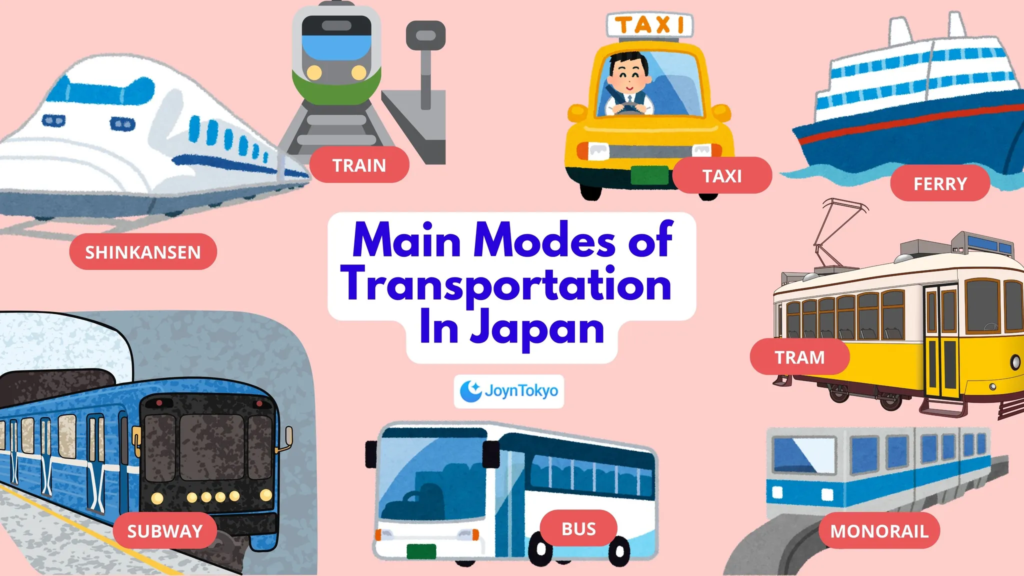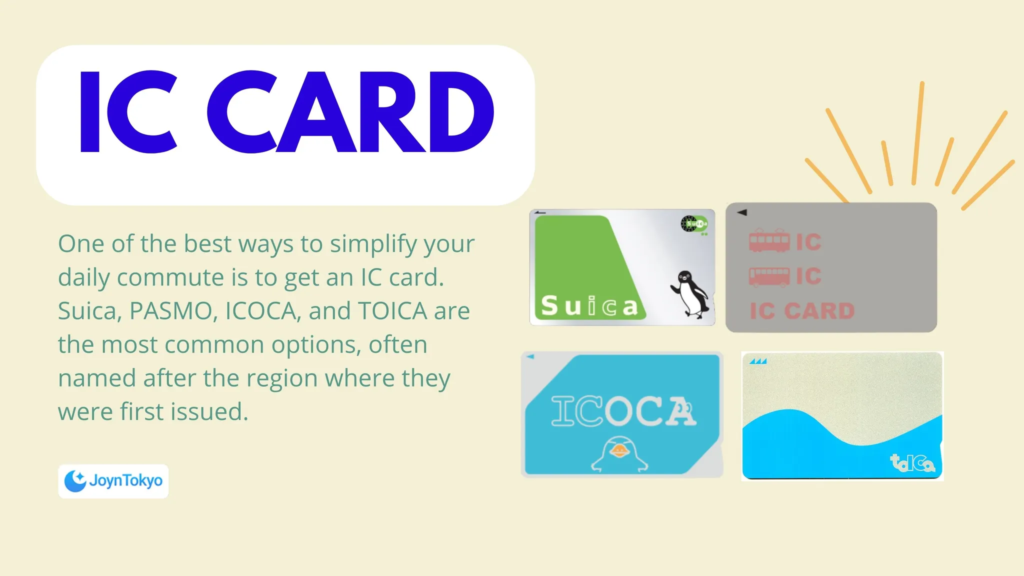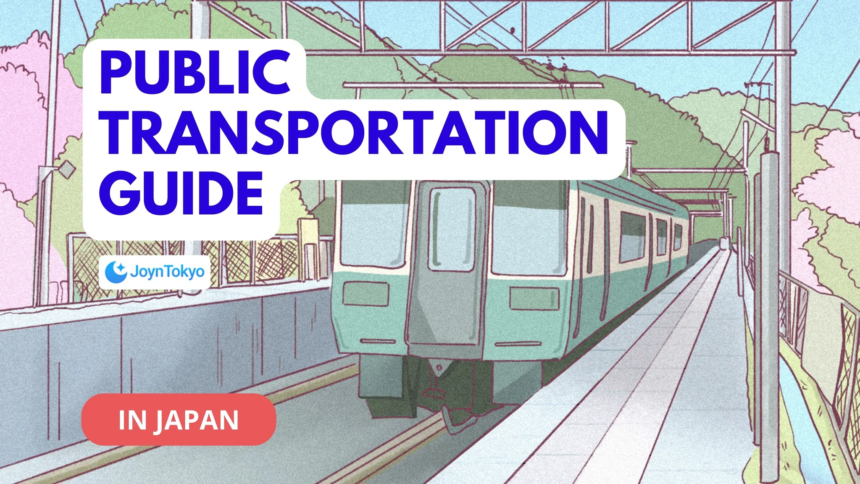Moving around Japan can be both exciting and efficient, thanks to a public transport network notorious around the world for its punctuality, cleanliness, and breadth. Whether you are visiting, preparing to move to Japan or have already settled in, understanding how trains, buses, subways, and other options work will help you navigate daily life with ease. This article provides a structured overview of Japan’s public transport system, tips on using IC cards navigation apps, and guidelines on local etiquette and discount passes.
Overview of Japan’s Public Transport Network
Japan’s extensive network reaches across both urban and rural areas, and offers, various options that cater to different travel needs. Major stations often provide English signage, making the system relatively accessible to foreigners. While the network involves multiple operators, the overall connectivity is excellent, allowing seamless transfers between trains, subways, and buses.
Main Modes of Transportation

Japan’s public transport spans across everything from bullet trains to ferries. Below is an overview of the most common options you might encounter.
Trains and Shinkansen
Trains are the backbone of Japan’s transport system. JR’s Shinkansen (bullet trains) connect major cities at high speed, while local and express trains cover regional routes. Train stations are often well-organized, and include English announcements, making them very foreigner-friendly.
Subways
Cities like Tokyo, Osaka, and Kyoto feature extensive subway networks with color-coded lines. They are efficient for short inner-city commutes and typically operate from early morning until around midnight.
Buses
Local buses navigate areas that are not covered by trains or subways, while highway buses connect distant cities at a lower cost than Shinkansen. Although slower, they can be a budget-friendly choice for long-distance travel. However, sleeping on the bus, if necessary, is not always the most enjoyable option.
Taxis
Taxis are easily available in urban areas and can be hailed on the street or at taxi stands. Though convenient, they come with higher fares, so many residents use them for special occasions or late-night returns when trains have stopped running.
Ferries and Monorails
Ferries are essential for travel between islands, such as routes to Okinawa or smaller islands near Hiroshima. Monorails operate in select urban environments (e.g., Tokyo’s Haneda Airport Monorail). Both can offer unique views and experiences, especially for leisure trips.
Streetcars or Trams
Found in smaller cities like Hiroshima and Kagoshima, trams are a charming way to explore local neighborhoods. They run on set routes and generally accept the same IC cards used for trains and buses.
Using IC Cards for Convenient Travel

One of the best ways to simplify your daily commute is to get an IC card. Suica, PASMO, ICOCA, and TOICA are the most common options, often named after the region where they were first issued.
How to Obtain and Recharge
You can purchase an IC card at major train stations or automated machines, usually for a refundable ¥500 deposit plus initial credit. English instructions are available on the machines, making the process straightforward. Recharging can be done at station machines or convenience stores—just insert the card, add funds, and you’re ready to go.
Where You Can Use It
IC cards are also interoperable in most of Japan’s major cities. They work on trains, buses, subways, and even some ferries or trams. Additionally, many convenience stores and vending machines accept IC payments, making everyday transactions faster and more convenient.
Navigating with Public Transport Apps
Even with user-friendly stations, a reliable travel app can save time and reduce confusion. Several apps offer multilingual support, real-time updates, and route planning features.
Recommended Apps
Japan Travel by NAVITIME: Offers detailed route information, including train, subway, and bus schedules.

Google Maps: Good for multi-modal directions, pedestrian routes, and real-time updates on train schedules.
Jorudan: Known for its user-friendly interface and accurate train times.

Tips for Effective Use
Adjust your phone’s language and region settings to Japan for the most accurate information. During rush hours (around 7 – 9 a.m. and 5 – 7 p.m. in major cities), apps may show crowd estimates—helpful if you wish to avoid peak congestion. Saving offline maps or bookmarking your favorite routes can also help if you encounter poor internet connectivity.
Etiquette and Cultural Norms
Japanese public transport is generally quiet and orderly. Talking loudly or taking phone calls in crowded trains is considered impolite, as is eating food or drinking liquid other. Priority seats are typically marked, and passengers offer them to the elderly, pregnant women, or those with disabilities. In busy stations, lines are formed on the platform to manage passenger flow and boarding.
Discount Passes and Cost-Saving Tips
If you plan to commute regularly or explore multiple cities, discount passes and commuter options can lower your transportation expenses significantly.
Commuter Passes (定期 / Teiki)
For those traveling between the same stations daily, a teiki offers unlimited rides on a specific route, potentially saving a substantial amount compared to buying single tickets each day.
Student Discounts
Students can often purchase reduced-rate monthly passes by presenting valid student identification. Check with your school or local station for details.
Tourist and Day Passes
Major cities like Tokyo, Osaka, and Kyoto sell day passes that allow unlimited rides on subways or buses within a 24-hour period. These can be cost-effective for sightseeing or short-term stays.
Final Thoughts
Japan’s public transportation system is a cornerstone of daily life for both residents and visitors. Trains, buses, subways, taxis, and more all integrate seamlessly to offer fast and reliable travel experiences. By picking up an IC card and using navigation apps effectively, you can move around confidently and even discover hidden local gems. Whether you’re commuting to work or exploring a new city, Japan’s public transport network makes every journey efficient and convenient.







